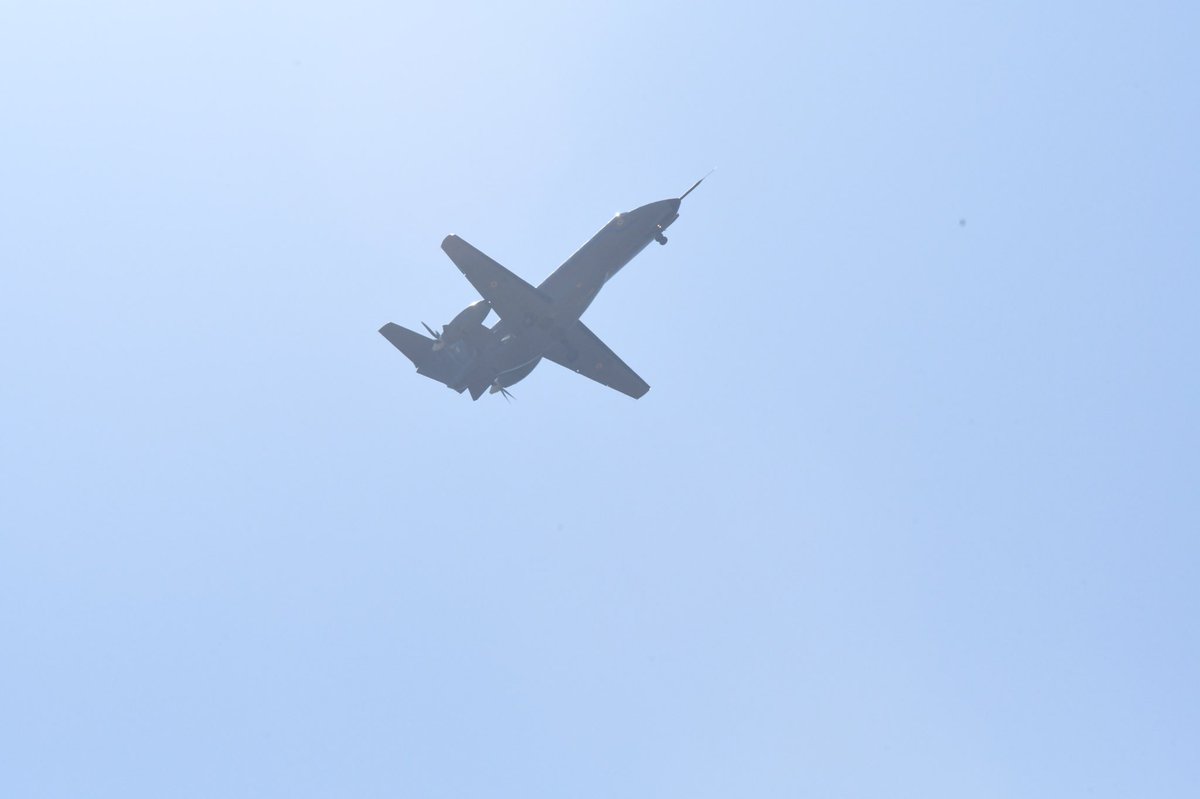

New Delhi: India’s indigenous light transport aircraft SARAS has been successfully test flown for a second time today. The flight commanded by Wing Commander U.P. Singh, Group Captain R.V. Panicker and Group Captain K.P. Bhat of Indian Air Force- Aircraft and System Testing Establishment, took off from HAL’s airport in Bengaluru for a text book flight.
This was the second of the 20 test flights planned for SARAS PT1N, before freezing the production version. The first successful test was carried out on January 24, this year. The design and development of the aircraft is being done by CSIR-National Aerospace Laboratories, NAL. According to NAL, the production model design is expected to be ready by June-July this year.
Congratulating the CSIR-NAL scientists and the commanders of Indian Air Force – Aircraft and System Testing Establishment, Science & Technology Minister Dr Harsh Vardhan said, the flight commanders deserve special appreciation, for their courage to fly an aircraft, which was rejected earlier. Minister announced commendation award for the Commandant and the test crew of ASTE.
“The project was dumped by the previous government, after an accident during test flight in 2009. Though the Directorate General of Civil Aviation, DGCA had exonerated the aircraft from any design flaw or poor-quality production, no effort was made to revive the project,” said Dr Harsh Vardhan, who was present during the second test flight today. “The credit for reviving the indigenous project goes to the present government headed by Narendra Modiji, who had given a thrust to ‘Make in India’ mission. It is the culmination of joint team efforts of ASTE, DGAQA, CEMILAC and HAL”, the minister said.
After the project was revived by the present government, NAL has incorporated design modifications and improvements on the SARAS PT 1 model, like 2×1200 shp engines and 104-inch diameter propeller assembles to cater to second segment climb gradient requirements, improved flight control system, rudder area, main wheel and brakes to cater to 7100 kg AUV, indigenously developed stall warning system, etc.
Dr Vardhan said, CSIR-NAL proposes to get the SARAS-Mk 2 version certified initially for military and subsequently for civil version. SARAS will be 20-25 percent cheaper than any imported aircraft in the same category. The improved version will be a 19-seater aircraft instead of 14-seater.
“The unit cost of the aircraft, with more than 70 per cent indigenous content, will be around 40-45 crores as against 60-70 crores for imported ones and has far more benefits than what the imported aircraft offer,” said Dr Harsh Vardhan.
Hindustan Aeronautics Limited, HAL has been identified as the production agency for the military version of SARAS, while the production of civil version will be given to identified private industries. India needs 120-160 aircraft in this genre – both civil and military versions – in the next 10 years.
“SARAS Mk 2 will be ideal for commuter connectivity under Government of India’s UDAAN Scheme for variety of applications like air taxi, aerial search/survey, executive transport, disaster management, border patrol, coast guard, ambulance and other community services,” said Dr Vardhan. He added “Its successful development will be one of the game changers in the history of civil aviation in India.”
The upgraded SARAS Mk2 version has considerable drag/weight reduction with unique features like high cruise speed, lower fuel consumption, short landing and take-off distance, low cabin noise, operable from high and hot airfield, with pressurized cabin, operable from semi prepared airfield and low acquisition and maintenance cost.
The aircrafts currently available in the international market are of 1970’s technology, such as Beechcraft 19000D, Dornier-228 and Embraer EMB 110. They have higher fuel consumption, lower speeds, unpressurized cabin, high operating cost and unsuitable for operations from hot and high-altitude airfields. After India began its light transport aircraft project, countries like Russia, China, USA, Indonesia and Poland have launched new programmes for development of next generation 19-seater aircraft.









